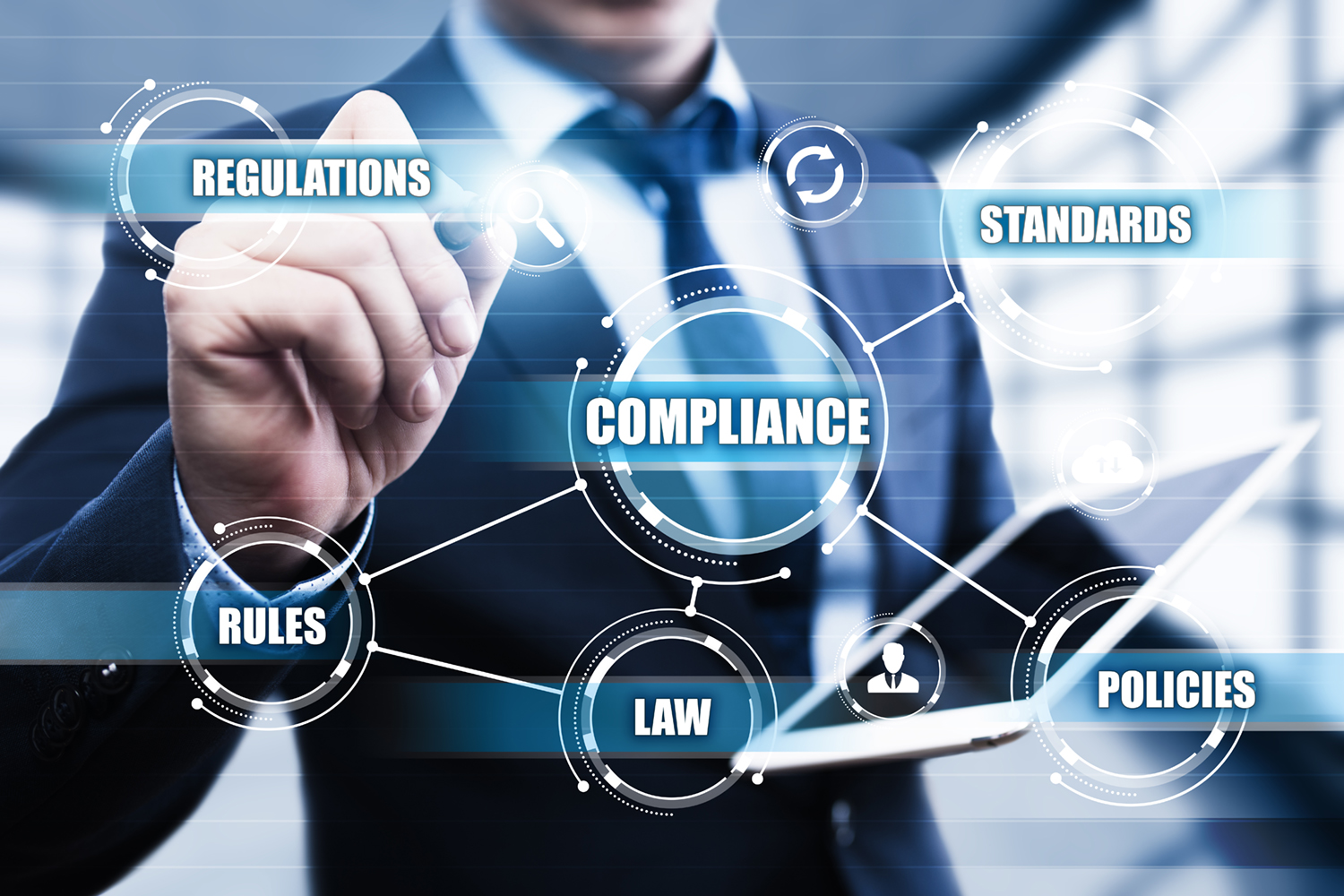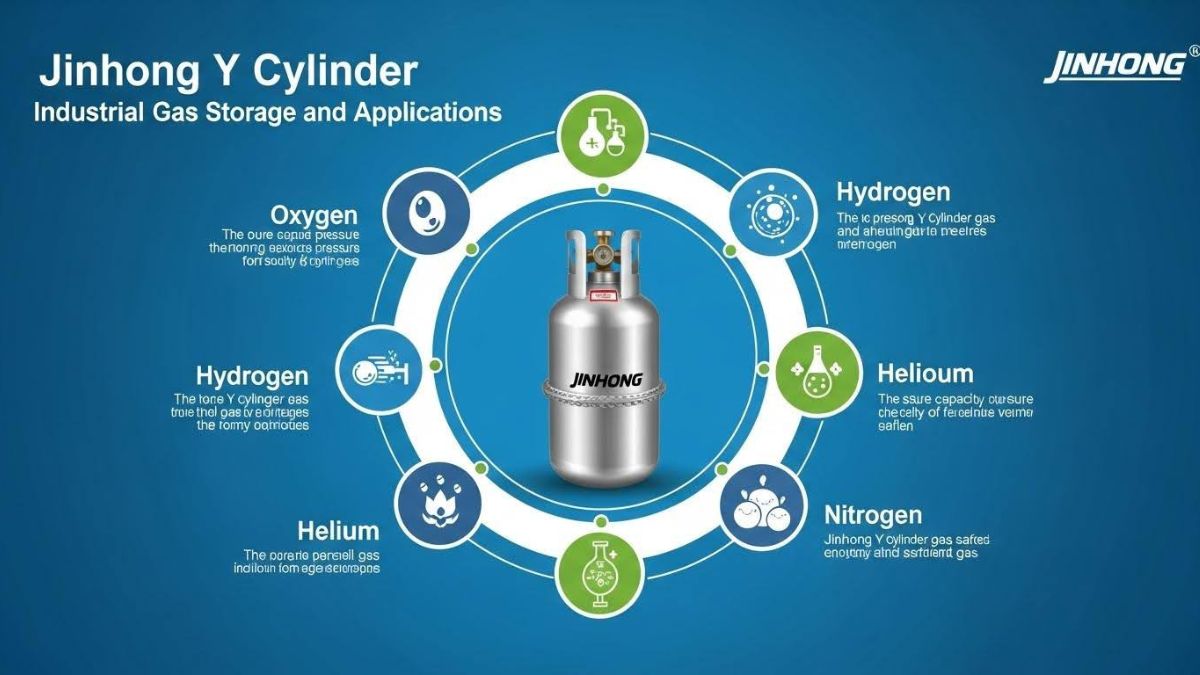TOPIC
Cyber Security Services: Ensuring Compliance with Global Standards

Cyber threats often take shape quietly, lurking behind innocent-seeming emails or overlooked system updates. Organizations sometimes feel a jolt when they realize sensitive data may be at stake. That moment of vulnerability can disrupt entire operations and tarnish hard-earned trust.
This is why IT cyber security support services have evolved into a crucial shield for businesses of all types. Modern regulations demand strict controls to guard personal and financial data, yet the motives behind these policies go beyond ticking boxes. They aim to preserve the fundamental reliability that every customer expects when sharing information online.
In this blog, we’ll explore why cyber security compliance matters, what global standards you need to know, and how you can navigate the often-complex landscape of regulation. You’ll also discover how technology plays a pivotal role in reinforcing your defenses. By the end, you’ll have a clearer path toward safeguarding your digital assets and meeting obligations that matter to both your customers and your bottom line.
The Importance of Cyber Security Compliance in Today’s Digital Landscape
Cyber security compliance isn’t just a legal formality. It’s a vital strategy for organizations grappling with an endless stream of emerging threats. Attackers no longer limit themselves to large corporations; they often target smaller businesses that might not have robust safeguards in place.
Understanding the Growing Threat of Cyber Attacks
Hackers and malware creators adapt constantly, seizing the slightest vulnerabilities in networks or software. This perpetual state of danger can lead to compromised customer data and the potential for identity theft or unauthorized transactions. Each breach dents public confidence, which can ripple through a company’s reputation and finances.
Even as technology advances, the methods of intrusion grow more cunning. Some hackers exploit weak passwords or social engineering tactics, while others breach overlooked system patches. These threats underscore why paying attention to compliance standards is so critical.
The Role of Compliance in Protecting Sensitive Data
Compliance frameworks often mandate specific security measures like encryption protocols, regular audits, and stricter access controls. These rules aim to curb the risk of data loss or exposure by creating a consistent baseline for all organizations to follow. When properly enforced, they function like guardrails that steer you away from potential pitfalls.
While it’s true that rules can feel restrictive at times, they ultimately set a standard of care for data. Meeting compliance not only helps companies dodge legal trouble; it also demonstrates a commitment to safeguarding customers’ information.
Overview of Global Cyber Security Standards
Several organizations have stepped up with frameworks that define what real security should look like in practice. Some standards come from international bodies, while others are local yet carry global influence. They’re all designed to guide businesses toward fortified policies and procedures.
However, each framework has its quirks. Some emphasize risk management, while others highlight personal data protection. Organizations often adopt multiple standards to cover their bases, particularly if they operate across different regions.
Key Cyber Security Standards Every Organization Should Know
Understanding which standards align with your business can be a puzzle. Start by looking at the nature of your data and the regions where you operate. Each framework serves a different purpose, yet they share a central aim: shoring up defenses against potential compromises.
ISO/IEC 27001: Establishing Information Security Management Systems
ISO/IEC 27001 is widely recognized for creating an overarching blueprint that addresses various facets of information security. It outlines how to design, implement, and continuously improve a solid security management system. By following this guide, organizations can spot weak points and reinforce them proactively.
Completing ISO/IEC 27001 certification also demonstrates credibility to partners and clients. It shows a dedication to thorough security processes, rather than ad-hoc measures. The standard’s focus on regular assessments means security remains an ongoing effort instead of a one-time task.
Implementing ISO/IEC 27001, however, calls for a mindset shift. Teams need to align on everything from risk assessment to detailed documentation. Although it seems meticulous, that diligence often pays off by minimizing avoidable breaches.
NIST Cyber Security Framework: A Flexible Approach to Risk Management
Developed by the National Institute of Standards and Technology, the NIST Cyber Security Framework helps organizations categorize and handle security risks in a structured way. It breaks security efforts into five core functions: Identify, Protect, Detect, Respond, and Recover. This logical approach makes it simpler to spot the links between various security activities.
One strong advantage of NIST is its adaptability. Companies can scale the framework based on their size, industry, and overall risk profile. While it began as a U.S.-focused standard, many global enterprises apply its concepts for clarity and depth in risk management.
Still, adopting NIST goes beyond ticking boxes. It requires a disciplined methodology that involves consistent monitoring. That diligence ensures any newly uncovered gap is promptly addressed before it morphs into a larger crisis.
General Data Protection Regulation (GDPR): Safeguarding Personal Data
GDPR is a landmark in personal data protection, especially for organizations that handle information from European Union residents. It demands transparency in how data is collected, stored, and processed. Non-compliance can lead to hefty penalties that can be financially crippling.
Yet GDPR is about far more than fines. It challenges companies to adopt a data privacy culture that respects user rights and preferences. This directive encompasses consent management, data access requests, and the right to be forgotten.
Complying with GDPR can feel complex, particularly for businesses that cross multiple geographic boundaries. Still, those who incorporate its principles often see improved trust from customers who value a company’s careful handling of personal data.
Navigating Compliance Requirements Across Different Industries
Compliance isn’t one-size-fits-all, since industries handle data differently. Healthcare providers juggle patient records, while e-commerce sites store financial details. The stakes vary, but the overarching theme remains: ignoring requirements can cost you dearly.
Industry-Specific Regulations: HIPAA, PCI DSS, and More
Healthcare organizations face the Health Insurance Portability and Accountability Act (HIPAA), which sets rules to protect patient information. Financial institutions and e-commerce sites often must meet Payment Card Industry Data Security Standard (PCI DSS) guidelines, limiting the chance of credit card theft.
Other sectors may have their own codes that complement broader frameworks like ISO or NIST. Combining these standards can be tricky, but it ensures no major gaps remain. The key is identifying overlap and customizing your approach so you don’t double your efforts.
The Consequences of Non-Compliance: Fines and Legal Ramifications
Failing to meet these rules can attract stiff penalties that go beyond monetary losses. Organizations risk lawsuits, damaged brand perception, and in extreme cases, forced business closures. Even if a company weathers the storm financially, repairing trust can be an uphill battle.
Legal troubles also sap valuable time and focus. Instead of innovating or expanding, your team may become mired in audits and remediation. This underscores the importance of getting compliance right from the outset.
Best Practices for Meeting Compliance Obligations
Start by thoroughly examining which regulations apply to your organization. Then, conduct gap analyses to see how your current setup measures up. This blueprint helps guide where to invest in tools or training.
Documentation also matters. By detailing security protocols, you give employees a roadmap to follow and regulators a clear view of your efforts. Frequent reviews of these protocols keep them up to date and aligned with shifting threat landscapes.
Implementing Effective Cyber Security Measures for Compliance
Building a compliance program is an ongoing process. It calls for dedication, organization-wide awareness, and a willingness to adapt. As you refine each piece of your security architecture, you strengthen your barrier against threats and external scrutiny.
Conducting Comprehensive Risk Assessments
Risk assessments uncover vulnerabilities in networks, software, and even employee behaviors. By cataloging each potential risk, you can rank them based on severity and prioritize defenses accordingly. This exercise brings clarity, showing you where to allocate budget and manpower.
Once you’ve outlined critical risks, make it a routine to revisit and update your assessments. Threats evolve, so your oversight should too. Over time, this helps you maintain a living security posture rather than relying on outdated assumptions.
Developing Policies and Procedures Aligned with Standards
Policies and procedures are the backbone of compliance. They detail access controls, data encryption requirements, incident response protocols, and more. Tailoring them to match recognized frameworks like ISO or NIST helps ensure you meet both legal and practical requirements.
When employees have clear guidelines, they’re less likely to make decisions that compromise security. This structured environment fosters a culture where adherence becomes second nature. Departments can collaborate more effectively when the rules are consistent across the board.
Training Employees on Cyber Security Awareness and Protocols
Human error remains a leading cause of breaches, often through phishing attacks or weak passwords. Regular training sessions remind staff of best practices and highlight new tricks hackers use. When staff recognize suspicious links or unusual requests, they act as your first line of defense.
Beyond spotting external threats, well-trained employees also value the gravity of compliance. They understand what data requires extra care and why. That knowledge diminishes the chance of accidental mishaps that could breach privacy regulations.
The Role of Technology in Achieving Compliance
Tools and platforms play a pivotal role in managing compliance, taking on tasks that would be too overwhelming or error-prone to handle manually. From continuous monitoring to automated reporting, technology offers solutions that keep your security posture grounded in real-time insights.
Utilizing Automation Tools for Continuous Monitoring
Certain software solutions track system performance, user activity, and network traffic 24/7. These tools flag anomalies that suggest unauthorized attempts or configuration drift from established standards. Rapid detection often prevents a minor incident from snowballing into a catastrophe.
Automation further accelerates routine tasks like patch management. Instead of waiting for a monthly fix, you can schedule updates as they’re released. This approach shortens the window in which vulnerabilities remain exploitable.
Integrating Security Solutions to Enhance Compliance Efforts
Organizations often layer multiple security solutions—like firewalls, intrusion detection systems, and SIEM (Security Information and Event Management) platforms. These tools feed data to each other, creating a holistic view of threats. When set up properly, they can detect correlations that a single tool might miss.
Integration also simplifies oversight. Dashboards that consolidate alerts make it easier to spot patterns and respond promptly. This strategic blend of technologies fosters a more cohesive, resilient security framework.
Leveraging Cloud Services While Maintaining Compliance
Cloud providers offer a convenient way to scale infrastructure, but organizations must ensure their chosen services comply with relevant regulations. Many providers have built-in security features and compliance certifications, but you remain responsible for how you configure and maintain your environment.
A shared responsibility model clarifies which protections are handled by the cloud provider and which fall on you. By understanding this split, you can fill any gaps that might jeopardize compliance.
The Path Forward for Cyber Security Compliance
Cyber security compliance may feel intricate, but its rewards extend far beyond avoiding fines. It positions you as a responsible entity that values integrity and user trust. That reputation can draw in new opportunities, especially in an era when customers weigh data protection heavily.
Recap of the Importance of Adhering to Global Standards
Following internationally recognized guidelines helps you fortify networks, train staff, and align best practices with legal demands. Whether it’s ISO, NIST, or GDPR, these frameworks drive accountability across your organization. When everyone knows the stakes, security becomes less of a hassle and more of a shared objective.
Encouraging Proactive Measures to Ensure Ongoing Compliance
Reactive fixes to major breaches often prove more expensive and damaging than proactive efforts. Conduct regular audits, invest in training, and refine policies as threats shift. This habit of constant vigilance shields you from unexpected losses and fosters a safety-first mindset.
Future Trends in Cyber Security and Compliance Strategies
Threats won’t remain static, and neither should your defenses. Artificial intelligence, blockchain, and quantum computing are reshaping the digital domain. Adaptability is key. By staying informed and adjusting your security measures, you prepare your organization for what lies ahead.
For now, the mission remains simple: treat compliance as an enabler rather than a burden. By embedding secure habits into daily operations and partnering with a data security provider like Devsinc, you’ll transform regulations into a strategic advantage that protects your data and bolsters your reputation.
TOPIC
Exploring the Jinhong Y Cylinder: Industrial Gas Storage and Applications

In industrial and laboratory environments, the need for reliable gas storage solutions is crucial. Among the many formats available, the Jinhong Y cylinder stands out as a high-capacity, high-pressure gas container designed for efficient storage and transport of specialty gases. With an emphasis on purity, performance, and safety, Y cylinders are trusted by industries ranging from semiconductors and laboratories to petrochemical plants and aerospace operations.
This article takes a deep dive into the design, specifications, applications, and advantages of the Jinhong Y cylinder, while also shedding light on the broader offerings of Jinhong, a global player in the specialty gas and cylinder market.
What Is a Y Cylinder?
A Y cylinder—sometimes referred to as a “ton container” or “T cylinder”—is a large, horizontal gas cylinder used to store and transport gases in bulk, especially under high pressure. These cylinders are ideal for gases that are either costly or consumed in large volumes, such as:
- Sulfur hexafluoride (SF₆)
- Silane (SiH₄)
- Ammonia (NH₃)
- Chlorine (Cl₂)
- Hydrogen chloride (HCl)
Y cylinders are constructed using high-strength steel or other reinforced materials and come equipped with pressure relief valves, gas-specific valve types, and neck threads tailored to the properties of the stored gas.
Dimensions and Specifications of Y Cylinders
Though specifications may vary slightly by manufacturer, Jinhong’s Y cylinders typically follow global standards for gas container design. Here are some standard specifications:
| Specification | Typical Value |
| Water Capacity | 49.5 – 52.5 liters |
| Working Pressure | Up to 150 bar (depending on gas) |
| Material | Seamless steel |
| Cylinder Orientation | Horizontal |
| Cylinder Weight | ~90 – 110 kg (empty) |
| Certification Standards | ISO9809, DOT, TPED, GB, etc. |
These cylinders are built to resist corrosion, handle hazardous contents, and ensure long-term durability under demanding industrial conditions.
Why Choose the Jinhong Y Cylinder?
Jinhong, a trusted name in the specialty gas industry, has a reputation for producing high-quality gas cylinders and supplying ultra-high purity gases to global markets. Their Y cylinders stand out due to the following reasons:
1. High Storage Capacity
Compared to standard industrial cylinders, Y cylinders provide significantly more gas per unit, reducing the frequency of cylinder changes and minimizing downtime.
2. Safety Compliance
Every Jinhong Y cylinder complies with international safety codes, ensuring that gases are safely stored and transported. From valve compatibility to explosion-proof construction, these cylinders are designed for handling toxic, corrosive, or flammable gases.
3. Versatility Across Industries
Whether it’s used in a semiconductor cleanroom or a chemical processing facility, the Y cylinder can handle diverse gases without compromising purity or safety.
4. Customization Options
Jinhong offers a range of customizable features for its Y cylinders, including:
- Valve type (Diaphragm, Ball, Needle)
- Gas purity levels
- Color-coded coatings
- Stamped serial numbers for traceability
Industrial Applications of Y Cylinders
Y cylinders are essential in sectors where gas consumption is high and continuous. Let’s explore their role across a few industries:
Semiconductor Industry
Gases like silane (SiH₄), ammonia (NH₃), and hydrogen chloride (HCl) are delivered in Y cylinders to semiconductor fabs. Their large volume capacity ensures consistent feedstock supply for chemical vapor deposition (CVD) and etching processes.
Chemical Manufacturing
In chemical synthesis and polymer production, bulk gases are used in continuous-flow reactors. Y cylinders reduce gas replacement frequency and ensure stable operations.
Power and Utilities
Sulfur hexafluoride (SF₆) is a common gas used for insulation in high-voltage switchgear. SF₆ is often stored in Y cylinders due to the quantity required for substations and grid systems.
Metallurgy and Welding
Some specialty gases used in high-end alloy processing and thermal spray coatings are stored in Y cylinders to maintain purity and minimize contamination risks.
Jinhong: Beyond Cylinders
Jinhong isn’t just a cylinder manufacturer—it’s a global supplier of industrial and specialty gases. From argon to acetylene, Jinhong provides gases for welding, medical, research, and semiconductor sectors.
Interested in pricing on one of Jinhong’s most popular gases? You can explore cost breakdowns for commonly used products like argon here: Jinhong
This pricing insight is helpful whether you’re sourcing gases in bulk or planning an industrial-scale project.
Maintenance and Safety Tips
Proper handling and maintenance of Y cylinders are essential to avoid hazardous situations:
- Store upright in well-ventilated areas
- Use regulators and fittings specific to the gas type
- Perform leak checks before each use
- Never attempt to refill or modify cylinders without professional certification
- Always follow SDS (Safety Data Sheet) instructions for each gas
Jinhong provides comprehensive safety documentation and training resources for all its products, including Y cylinders and the gases they carry.
Cost Considerations
While Y cylinders require a higher upfront cost compared to standard cylinders, they offer better cost-efficiency over time due to:
- Fewer cylinder changes
- Reduced shipping and handling
- Lower downtime in continuous processes
In bulk supply scenarios or semiconductor facilities, Y cylinders can lead to significant cost savings when calculated on a per-liter or per-gram gas usage basis.
Global Standards and Certification
Jinhong’s cylinders conform to key international standards, including:
- ISO 9809 for seamless steel cylinders
- DOT/TC certification for U.S. and Canadian markets
- TPED/ADR compliance for Europe
- GB standards for China
This makes them an ideal choice for companies operating in regulated industries and across global markets.
Conclusion
The Jinhong Y cylinder represents a critical innovation in industrial gas storage, offering bulk capacity, high-pressure tolerance, and unmatched safety. Whether you’re in semiconductor fabrication, chemical processing, or energy infrastructure, this cylinder format is built to support high-performance applications while ensuring operational efficiency.
Jinhong’s commitment to quality, global distribution, and innovation in specialty gases has made them a go-to supplier for businesses around the world. If you’re looking to invest in reliable, certified, and high-capacity gas storage, the Y cylinder may be exactly what your operation needs.
TOPIC
Can You File a Claim If Road Conditions Caused Your Motorcycle Crash?

Motorcycle crashes impact lives. When poor road conditions cause these accidents, you may wonder about filing a claim. Understanding your rights helps you make informed decisions. Bad roads, such as those with potholes or debris, present unique challenges for riders. These hazards can lead to devastating outcomes. You may think, “Who is responsible?” That’s a fair question. State or local governments often manage road upkeep. If they neglect maintenance, they might be accountable. But proving this requires evidence and expertise. Consulting experienced professionals is crucial. Groth Law Accident Injury Attorneys is a trusted resource in such situations. They guide you through the legal process. Gathering evidence, such as photos or witness testimonies, strengthens your case. Awareness of these steps can protect your future. You deserve justice when harmed due to someone else’s negligence. Understand your options. Knowledge empowers you to seek rightful compensation. Let’s uncover what action you can take.
Your Legal Rights and Responsibilities
When faced with a motorcycle crash caused by poor road conditions, knowing your rights is the first step toward resolution. Do you have a claim? Yes, if negligence on the part of road maintenance entities contributed to the crash. It’s critical to determine if the government is responsible for the road’s condition. Understanding regulations helps you establish a claim. For instance, Federal Highway Administration provides guidelines on road maintenance. Knowing these can help you understand where negligence occurred.
Proving Negligence in Motorcycle Crashes
To succeed in a claim, you must prove negligence. This involves showing that the responsible party knew or should have known about the hazard. Gathering evidence is essential. You need clear proof that links the road condition to your crash. Photos, reports, and witness statements play a vital role. Document everything, including the location, time, and specific conditions of the road. These details create a strong foundation for your claim.
Steps to File a Claim
Filing a claim involves several steps. First, report the accident to authorities. Accurate police reports can aid your case. Then, seek medical attention. Health records not only ensure your well-being but also serve as evidence of your injuries. Afterward, consult legal experts. They guide you through the intricate legal process. Experts can help you notify the responsible government entity of your intent to file a claim. It’s important to meet all legal deadlines, as missing them can jeopardize your case.
Understanding Liability
Determining liability in these cases can be complex. The table below outlines possible responsible parties and their typical maintenance duties:
| Responsible Party | Typical Maintenance Duties | When Liability May Apply |
| Local Governments | Maintain city streets | When city roads are neglected |
| State Governments | Maintain highways | When highways have hazards |
| Federal Agencies | Oversee federal routes | When federal routes are unsafe |
Importance of Expert Guidance
Expert guidance is invaluable. Legal professionals understand the nuances of such claims. They assess your situation and offer advice tailored to your needs. With their help, you can navigate the complexities of the legal system. This support can be a significant relief, ensuring your rights are protected.
Taking Action
Act promptly. Time matters in these cases. Evidence can disappear, and legal deadlines can pass quickly. By acting swiftly, you preserve your rights and enhance your chances of success. Stay informed and proactive throughout the process. Your diligence can make a substantial difference in the outcome.
Conclusion
Motorcycle crashes are life-altering events. When poor road conditions cause these incidents, you have the right to seek justice. Proving negligence requires careful documentation and expert assistance. By understanding your rights and taking informed steps, you can pursue rightful compensation. Remember, you are not alone. There are resources and professionals ready to guide you through this challenging time. Your well-being and future matter. Take control and act today.
TOPIC
A Kidnapping Private Detective Shares 8 of the Top Reasons Kidnappers Choose to Kidnap Others

Kidnapping is a terrifying crime that can happen to anyone. Children and adults are often targeted. It is necessary to communicate with private investigators in OKC and process servers near me who have worked on multiple kidnapping cases. Their knowledge about kidnapping cases reveals the top hidden reasons for kidnappers. These expert professionals play an important role in solving complex cases like this.
The top 8 reasons kidnappers choose to kidnap others and how process servers in OKC and private investigators in OKC help victims seek justice are explained in this blog.
1. Ransom Money
Money is seen as the most common reason behind kidnapping. Kidnappers often target those who belong to wealthy families and business backgrounds, so they can have a large amount of money from the victims’ families. Private investigators in Oklahoma City are experts in tracking them and getting in communication to work with law enforcement for victims.
2. Personal Revenge
Kidnappers often kidnap people for personal conflicts instead of money. In such cases, people take revenge on others. It can be a partner, close friend or even a colleague. A private investigator in OKC can collect evidence and uncover the truth for justice.
3. Custody Battles
Sometimes, one parent can kidnap their child because of a custody battle, and it is known as parental kidnapping. These situations can be complicated if parents take their child outside the state. In such a situation, private investigators in Oklahoma work closely with high authorities to track kidnappers and return the child safely.
4. Human Trafficking
Human trafficking has been a major issue in the U.S., including in Oklahoma. Traffickers kidnap individuals and force them into exploitation. Quick responses from a process server in Oklahoma City can make all the difference and avoid court cases.
5. Mental Illness or Delusion
Not every kidnapper has a logic behind kidnapping. Some kidnappers have mental illnesses, and they believe it is a way to earn money from people who do not belong to them. These cases are extremely difficult and cannot be solved without the help of investigators near me who can handle complex situations.
6. Jealousy or Obsession
People who are jealous and obsessed kidnap others to gain control over them. A skilled private investigator and process server in OKC works with law enforcement to protect victims and uncover the truth.
7. Coercion or Leverage
People often kidnap others to pressure them. For example, a criminal kidnaps a business owner to get assets from them. In such high-profile cases, a process server in OK delivers legal documents to deal with the kidnappers and support victims.
8. Random Opportunity or Mistake
Some kidnappings are not planned. Some happen due to mistaken identities. Process servers and private investigators in Oklahoma City can interview witnesses and help with identifying the suspect.
Conclusion
People often get upset and emotional when they face the kidnapping of their loved ones. In such a complicated situation, it is necessary to find private investigators in OKC and a process server in Oklahoma who have experience in solving complex cases. These professionals are familiar with Oklahoma laws and work efficiently to gather evidence.
If you are searching for private investigators and process servers near me, it means you have trust in them that their services are reliable and supportable for their clients who hire them. The right team can help you everywhere, whether it’s a court matter, a child custody battle or a kidnapping case.
-

 BLOG1 year ago
BLOG1 year agoATFBooru: A Hub for Animated Art and Community
-

 CONSTRUCTION1 year ago
CONSTRUCTION1 year agoBuilding a Home Gym in Your Basement (7 Key Renovation Tips)
-

 BLOG1 year ago
BLOG1 year agoFictionmania: A Deep Dive into the World of Transformative Stories
-

 GAMES1 year ago
GAMES1 year agoSnow Rider 3D: Unblocked Tips and Tricks for Gamers
-

 BLOG12 months ago
BLOG12 months agoGIFHQ: A Comprehensive Guide
-

 BLOG1 year ago
BLOG1 year agoVincent herbert new wife: A Detailed Overview
-

 LIFESTYLE12 months ago
LIFESTYLE12 months agoVersatile Living: Stylish Indoor Outdoor Rugs with Eco-Friendly Appeal
-

 BUSINESS1 year ago
BUSINESS1 year agoInvestiit.com Tips: A Comprehensive Guide for Smart Investing
